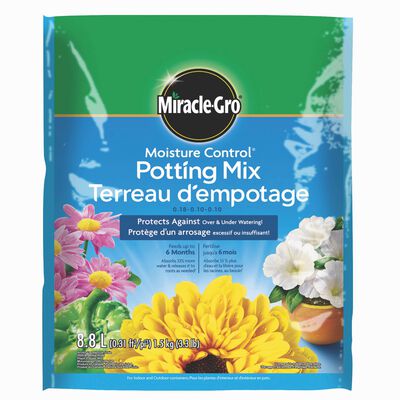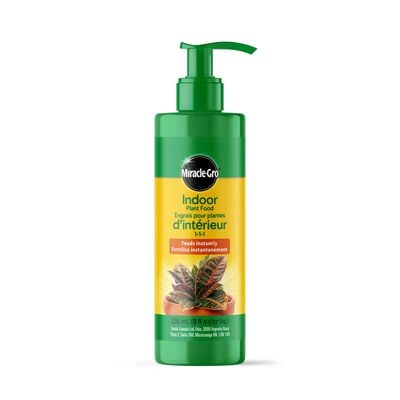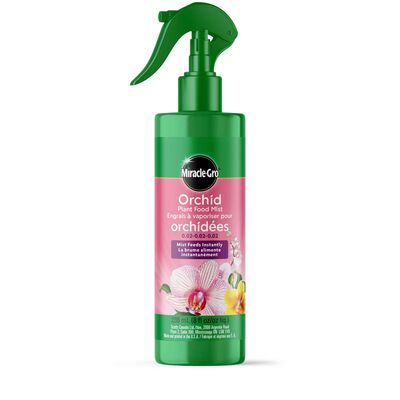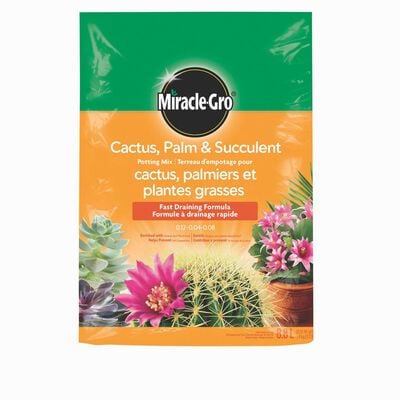
Indoor Flowers that Bloom in Winter
Here's a genius way to banish cold weather blahs: Grow flowers indoors that bloom in winter. Creating a cheerful, colorful garden inside is just the right antidote to the cold, gray weather outside. Try one (or more!) of these 5 low-maintenance, easy-to-find winter flowers, then help ensure those gorgeous blooms by taking these 2 key steps: Plant them in one of Miracle-Gro®'s premium potting mixes and, while they're busy growing leaves and blooming, keep them well nourished by feeding them with the right Miracle-Gro® plant food (don't worry—we'll tell you which one!). Of course, you'll want to be sure to follow all the directions on the labels.
Ready to meet our winter bloomers?
Amaryllis
These big bulbs have giant payoffs, rewarding weeks of patience and curiosity with flowers the size of your face. In late summer, look for bulbs in bags to DIY. Or, nab a few already potted up in containers in early winter that are ready to bloom. If you choose to plant your own bulbs, fill pots with Miracle-Gro® Moisture Control® Potting Mix to provide an awesome growing base, position bulbs with their "shoulders" above the soil line, and place them in a dark closet (seriously!) 8 weeks before you want them to bloom. Bringing amaryllis bulbs back out into the light will cause each to send up a flower bud that will soon turn into a mega-big, megaphone-shaped flower that will last for weeks.
Once the bloom begins to fade, start feeding your amaryllis with Miracle-Gro® Indoor Plant Food every 1 or 2 weeks to replenish all that spent energy. (Stop the feeding once it's time to go dormant again.)
African Violets
Okay, granted, when you think of this flower you may picture little pots of violets on doilies in your grandma's house. But they're so much more than that! Plant these beautiful babies in a container that matches your own quirky personality (sleek geometric pot? antique cigar box?) and no one will mistake them for anything but yours. Fill the pot with Miracle-Gro® African Violet and Tropical Plant Potting Mix, then pick a spot for your African violets that gets indirect morning sunlight—not too hot. And those furry leaves that remind you of your cat? They enjoy getting wet about as much as your feline does. Apply water carefully around the leaves once a week. Or, make things super easy for yourself by planting in a self-watering African violet pot. Either way, be sure to feed these lovelies with Miracle-Gro® Water Soluble Ultra Bloom® Plant Food for tons of blooms.
Clivia
Clivia is a cool plant that actually does best when it's ignored 3 or 4 months out of the year—good news for you folks who tend to forget to water. With wide, leathery leaves that fan out from the base in a flat, arching shape like the headpiece of a Vegas showgirl, clivia is a show-stopper year-round, but the real show happens in late winter. That's when Day-Glo orange or sunshine-yellow flowers burst open in a cluster! The trick to getting those late winter flowers is to encourage clivia to go dormant for most of the winter. To do that, place clivia indoors in a north-facing window or a spot that only receives dappled light and is about 10 to 13 degrees C (this is key). From October through early January, skip the watering. In mid January, awaken clivia with weekly watering, gradually bump up the warmth to about 15.5 degrees C or so, and watch for those bright blooms to take center stage in about 8 weeks.
During summer, clivia can bask outdoors in its pot as long as you tuck it in a slightly shady, protected nook. To help ensure terrific results, be sure to plant clivia in Miracle-Gro® Moisture Control® Potting Mix (its roots will be so happy!) and begin nourishing it with Miracle-Gro® Indoor Plant Food once its blooms have faded. Feed every 1 to 2 weeks, then stop when cool weather rolls around once again.
Orchid
It's hard not to be tempted by the exotic, splashy orchid blooms found in markets everywhere. After all, orchid flowers deliver one of the biggest bangs for your flower-growing buck—3 months will pass before these flowers even think about fading! The waxy, speckled flowers come in what seems like a zillion shapes and colors, perfect for collecting. Treat these beauties to Miracle-Gro® Orchid Potting Mix and Miracle-Gro® Ready to Use Orchid Plant Food Mist, both of which are tailored to give orchids just what they need to get and stay strong, happy, and gorgeous.
Because orchids are tropical plants, they love humidity and dappled, indirect light. When the soil becomes dry (stick your finger in the pot to check), place the pot in the sink and water thoroughly, until water starts coming out of the drainage holes. Try to wet just around the base of the plant, since water that gets and stays in the crown (or center) of the plant could cause it to rot. Most orchids bloom between winter and spring. To encourage yours to bloom again once the flower has faded, cut the stalk back to the first leaf. If your orchid is so happy that it begins to outgrow its container, give it a little elbow room by repotting in a larger pot.
Christmas Cactus
A favorite indoor plant, the Christmas cactus has quirky, flat, pad-like segments for branches, with hot pink flowers forking out from the ends for a month or more each year. To flower, Christmas cactus needs a long nap starting in the fall, so that means 13 to 16 hours of darkness a day, temps between 13 and 16 degrees C, and very little water. Like clivia, it can be brought back from its winter slumber by giving it dappled light, bringing the temperature up to about 18 degrees C, and giving it a weekly drink. Then, 6 weeks later, presto: flowers!
One word of advice: This is a tropical cactus, not a desert one, so it'll require regular water when it's not dormant. Still, you'll want to plant it in top-notch potting mix with good drainage, like Miracle-Gro® Cactus Potting Mix. And while your own Christmas feast may come but once a year, remember that your cactus needs to be fed from the time its blooms begin to fade all the way through to fall. Treat it to regular servings of Miracle-Gro® Indoor Plant Food, which is created especially to satisfy hungry cacti and succulents. Insider tip: What most people call a Christmas cactus (Schlumbergera x buckleyi) is actually a Thanksgiving cactus (Schlumbergera bridgesii). A true Christmas cactus has rounded pads with no points, while a Thanksgiving cactus pad looks like a cat face with pointy ears.
So when it's dull and gray outside, take charge and amp up the joy with some blooming color indoors!






